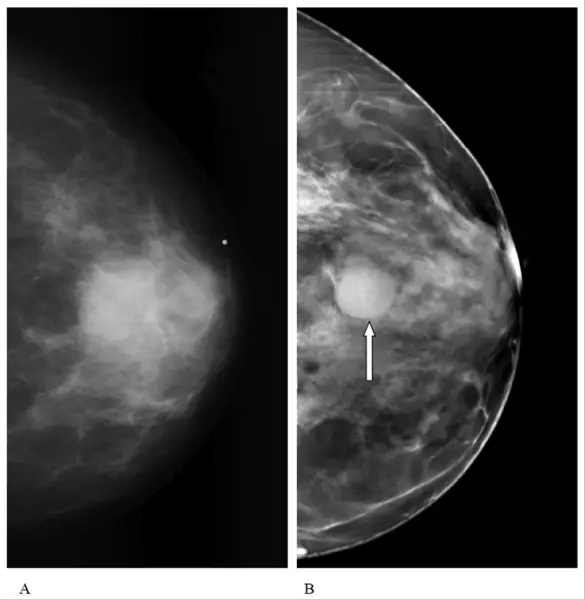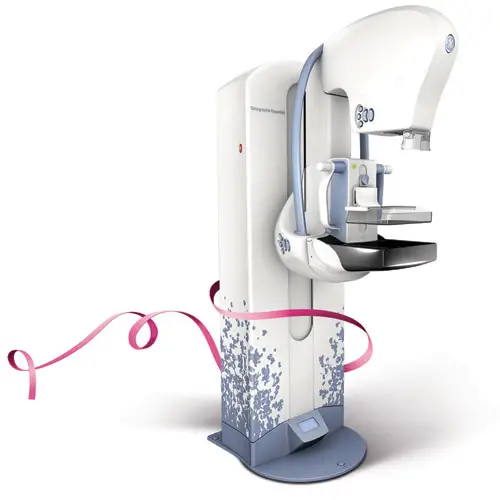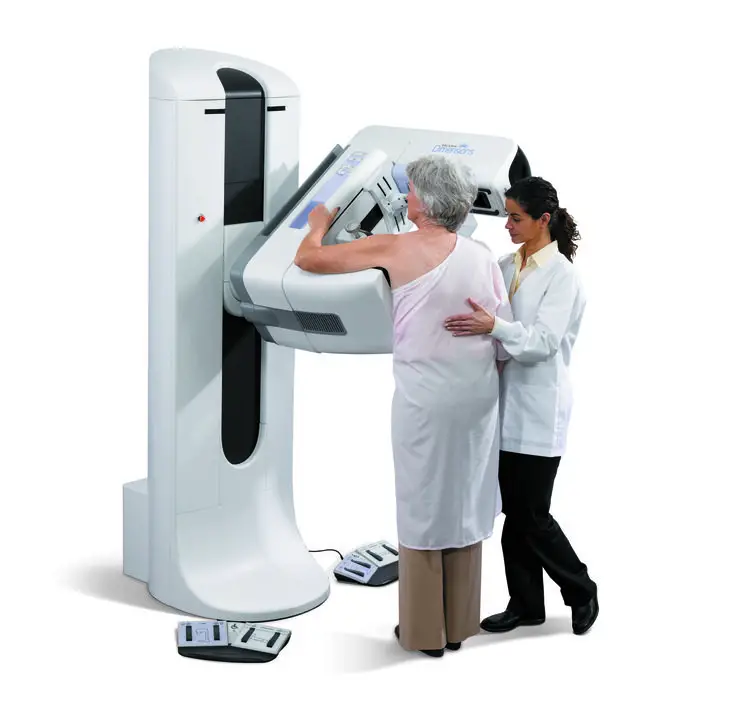Medicare Advantage Plans Cover Mammograms
Medicare Advantage plans must offer the same basic benefits that Original Medicare offers, including mammograms.
In addition to the standard hospital and medical benefits all Medicare plans must cover, most Medicare Advantage plans cover prescription drugs, vision, dental, hearing and other benefits that Original Medicare does not cover.
A licensed insurance agent can help you find Medicare Advantage plans in your area.
Find Medicare Advantage plans in your area
Or call 1-800-557-6059TTY Users: 711 24/7 to speak with a licensed insurance agent.
About the author
Christian Worstell is a senior Medicare and health insurance writer with MedicareAdvantage.com. He is also a licensed health insurance agent. Christian is well-known in the insurance industry for the thousands of educational articles hes written, helping Americans better understand their health insurance and Medicare coverage.
Christians work as a Medicare expert has appeared in several top-tier and trade news outlets including Forbes, MarketWatch, WebMD and Yahoo! Finance.
Christian has written hundreds of articles for MedicareAvantage.com that teach Medicare beneficiaries the best practices for navigating Medicare. His articles are read by thousands of older Americans each month. By better understanding their health care coverage, readers may hopefully learn how to limit their out-of-pocket Medicare spending and access quality medical care.
Next Steps After Unexpected Results
If a mammogram shows an atypical result, people may need further examinations to diagnose the issue. However, atypical results do not mean a person has breast cancer. Doctors may need to examine a specific area in more detail or examine any cysts, masses, or calcifications, which are deposits of calcium.
Healthcare professionals will need to analyze any unusual signs in the breast tissue to check if they are noncancerous or could indicate breast cancer. A follow-up examination may include one or more of the following:
- another mammogram
If the results show nothing of any concern, people may not need further testing until their next routine checkup. If further testing shows any atypical indications, people may require a biopsy to confirm the findings. A biopsy is a tissue sample that doctors study under a microscope to check for cancerous cells.
may have a higher disease detection rate than standard 2D mammograms and can reduce the need for follow-up imaging.
People may require a 3D mammogram as a screening or diagnostic test for breast disease. A screening mammogram helps with the early detection of breast cancer when there are no symptoms. It is an annual, routine test for females over the age of 40 years or those at higher risk of breast cancer.
A diagnostic mammogram helps diagnose a condition if people have any atypical signs or symptoms, such as a lump or nipple discharge.
Breast Cancer Screenings Are Important
There are 2 types of mammograms: screening and diagnostic. The 3D mammogram is a diagnostic mammogram, but many oncologists militate against it. From their standpoint, 3D mammograms are no more efficient than the 2D ones.
Medicare will cover a mammogram only if its a yearly, routine screening. If its a diagnostic, Medicare will not cover it. Other medical insurance programs shy away from paying for 3D mammograms, as well.
This is because so many oncologists have pointed out that they are as efficient as a simple 2D mammogram. Moreover, they mentioned that women expose themselves to a higher intake of radiation by undertaking 3D mammograms, given that these are done only as a combo with their 2D counterparts.
Paradoxically, this excessive subjection to radiation can cause breast cancer. Why would the combo mammogram be necessary? Its simple: theres not enough proof that the 3D mammogram is accurate enough on its own.
If youve ever stepped foot in a radiology center, you will have seen that the 3D mammogram was advertised everywhere as a better alternative to the 2D one.
How can that be when oncologists are all raging at the mere thought of women actually thinking that theyre doing themselves a favor by getting hit with huge doses of radiation?
Also Check: Do I Need Part C Medicare
How To Limit Out
If your doctor recommends a 3D mammogram, choose a facility that accepts Medicare plans. You can also contact the office before the appointment to find out your total costs and what your Medicare plan will cover.
Some people choose to sign up for Medicare Advantage plans or add supplemental insurance to Medicare to help with out-of-pocket expenses. If you have one of these plans, contact the company to find out exactly whats covered.
What Is A Baseline Mammogram

A baseline mammogram is a mammogram that is done to create a “baseline” for future comparison.
It is often done when a woman is in her 40s or 50s, before she begins having annual mammograms.
Having a baseline mammogram can help doctors with early detection by letting them see small changes in the breast sooner.
Source: Pexels
Don’t Miss: Can You Get Medicare At 65 Without Collecting Social Security
Medicare & 3d Mammograms
Having a mammogram is a routine check for women, especially after 40. In fact, it is as much of a routine as the prostate exam for men.
Even though Medicare has been around since 1966, some people have difficulties in understanding what it does and what it does not cover.
Because a mammogram is so important after ones passed a certain age mark, the question on the lips of all women is whether Medicare covers 3D mammograms or not. The answer, right off the bat, is no. Now youre probably wondering why.
The best thing to do is speak with a licensed agent from BGA Insurance Group about your plan so they can explain what coverage you have, or if you need new coverage.
Why Did I Get Two Bills For Mymammogram
There are two parts to your mammogram bill.The first part is called the technical component, and it covers the cost of themammogram itselfthe use of the mammography machine, the technologist whoperformed it, and any supplies used during the study.
The second part is the professional component.This charge is for the services of the radiologist who reviews the mammogramimages and reports the findings to your doctor.
Some imaging facilities bundle both of thosecharges into one bill, but others bill these costs separately. Both bills aretreated the same by Medicare. If the study was a screening mammogram, Medicarecovers both parts at 100%. Medicare pays 80% of both bills if the mammogram isa diagnostic study.
Breast cancer is the second most common cancerin the U.S. With early detection and treatment, the five-year survival rate is99%. Medicares commitment to preventive care and screening mammograms meansyou dont need to leave your health to chance.
Also Check: What Shots Does Medicare Pay For
Does Medicare Cover Diagnostic Mammograms
If a screening shows abnormalities, your doctor may order a diagnostic mammogram. When a screening shows breast abnormalities or a high breast density, your doctor may recommend follow-up testing. Testing might include a diagnostic mammogram, a breast ultrasound, or a breast MRI.
Medicare pays for as many diagnostic mammograms that a doctor requires. Part B covers diagnostic mammograms, but youll pay 20% of the cost unless you have a supplement.
Primary And Adjunctive Screening In Women With Dense Breasts
The USPSTF found insufficient evidence to assess the balance of benefits and harms of adjunctive screening for breast cancer using breast ultrasonography, MRI, DBT, or other methods in women identified to have dense breasts on an otherwise negative screening mammogram.
Epidemiology of Dense Breasts
In the United States, the most commonly used classification system for breast density is the American College of Radiologys Breast Imaging Reporting and Data System 4-category scale . Data from the BCSC indicate that about 25 million women aged 40 to 74 years are classified as having heterogeneously or extremely dense breasts. The proportion of women with dense breasts is highest among those aged 40 to 49 years and decreases with age.14
Increased breast density is a risk factor for breast cancer. Data from the BCSC indicate that, compared with women with average breast density, women aged 40 to 49 years with heterogeneously or extremely dense breasts have a relative risk of 1.23 for developing invasive breast cancer. For women aged 50 to 64 years with heterogeneously or extremely dense breasts, the RR is 1.29, and for women aged 65 to 74 years, it is 1.30.7 However, women with dense breasts who develop breast cancer do not have an increased risk for dying from the disease, after adjustment for stage, treatment, method of detection, and other risk factors, according to data from the BCSC.15
Primary Screening Test Performance Characteristics
Primary Screening Frequency
Assessment
Recommended Reading: Do Walk In Clinics Take Medicare
Medicare Advantage Coverage For Mammograms
Medicare Advantage is required by law to offer a member the same level of coverage as an Original Medicare beneficiary.
This is known as minimum equivalent cover and basically means that Medicare Advantage members will get the same level of treatment as a person who has Original Medicare.
However, on top of this Medicare Advantage Plans usually provide additional benefits to their members for a range of medical services, tests, and items not covered by Original Medicare.
Youll need to check with your Medicare Advantage provider to see what additional services they offer you, but some examples include:
-
Transportation to and from your mammogram.
-
Free or reduced prices for using in-network doctors.
-
Meals and checkups after in-hospital visits.
The best way to find out what your plan offers is to speak with your insurance agent who sold you the plan or to look at your Medicare Advantage Plan contract.
Reach out to one of our agents if youre interested in finding a Medicare Advantage plan that offers additional benefits for mammograms, breast cancer screenings, tests, and other cancer screenings.
Source: Pixabay
What Is A Diagnostic Mammogram
A diagnostic mammogram is used to look more closely at a possible cancer to help determine whether or not it actually is cancer. You may be referred for a diagnostic mammogram if your screening mammogram shows something abnormal.
Medicare Part B covers 80 percent of the Medicare-approved amount for a diagnostic mammogram. You would be responsible for the remaining 20 percent. The Part B deductible would also apply. Some Medigap plans help pay these costs.
Your costs may be different for a diagnostic mammogram if you have a Medicare Advantage plan.
A regular screening mammogram is just one preventive health care service for women that Medicare covers. Its also a good reason to schedule your annual Medicare Wellness Visit and ensure youre up to date on all your preventive health screenings.
Also Check: Does Medicare Pay For Assisted Living In Florida
The Different Types Of Breast Cancer:
There are many kinds of breast cancer. Some of the more common types are:
-
Ductal carcinoma in situ
-
Inflammatory breast cancer
-
Metastatic breast cancer
If youre worried about a lump on your breast, we strongly advise that you see your doctor and get it checked out as soon as possible.
Speak to your physician about the potential types of breast cancer out there to help you understand potential risks and treatments.
Does Medicare Cover Annual Breast Exams

A breast exam is another diagnostic breast cancer tool that can be used to detect lumps or other abnormalities within the breasts. Medicare Part B covers annual breast exams, separately from screening and diagnostic mammograms, as part of your pelvic exam. Medicare will cover a pelvic and breast exam once every 12-24 months, depending on your cervical and vaginal cancer risk.
What extra benefits and savings do you qualify for?
Recommended Reading: Does Medicare Cover Bone Grafts
How Does Medicare Cover Mammograms
If you are a woman enrolled in Original Medicare and you are age 40 or over, Part B will generally cover the allowable charges for one screening mammogram every 12 months so you have no charge. Your Part B deductible and coinsurance amounts may apply. Usually eleven full months must have elapsed since your last screening mammogram before Medicare will pay for another one.
If you are a Medicare beneficiary between the ages of 35 and 39, Part B will generally cover the allowable charges for one baseline mammogram prior to age 40.
If your doctor orders a diagnostic mammogram that is medically necessary for your care, Part B also covers 80% of the allowable charges after youâve met your deductible.
Individuals who are enrolled in a Medicare Advantage plan may also pay little or nothing out-of-pocket for mammograms. Some plans charge a small copayment or waive the deductible for screening tests like mammograms. Medicare Advantage plans must cover everything that Original Medicare covers , but they can and often do include additional benefits for members such as no-cost screening exams and even routine vision, hearing, and dental coverage. With a Medicare Advantage plan you must continue to pay your Part B premium.
Recommended Reading: Does Medicare Pay For Skilled Nursing
Does Medicare Cover Mammograms If Youre 65 Or Older
There is no age limit for breast cancer screenings, and you should always book an annual mammogram. Studies show that women aged 60-69 who got mammograms regularly had a 33% lower risk of dying from breast cancer than women who did not get mammograms. Its important to make a plan with your health care provider and discuss any risk factors or personal history you may be aware of before booking.
Recommended Reading: Does Medicare Cover 100 Percent Of Hospital Bills
A Note About Sex And Gender
Sex and gender exist on spectrums. This article will use the terms male, female, or both to refer to sex assigned at birth. .
A 3D mammogram, or digital tomosynthesis, differs from a standard mammogram offering a 2D picture.
A 3D mammogram helps doctors screen thoroughly for breast cancer, including in people with no noticeable signs or symptoms of the disease. This technique may be particularly important for certain individuals, such as those with dense breast tissue.
Accurate imaging is critical, as breast cancer is common. According to the American Cancer Society, 1 in 8 females may develop breast cancer in their lifetime.
This article explains the 3D mammography process in detail. It also explains who might need a 3D mammogram and what they can expect from the screening. Finally, it will outline the general coverage of health insurance policies and other ways to get help toward the cost of a 3D mammogram.
A 3D mammogram procedure is similar to a traditional mammogram. These mammograms are imaging tests that healthcare professionals use to check for any breast diseases, such as breast cancer.
A standard 2D mammogram creates a flat image of the breast, while a 3D mammogram produces a three-dimensional image.
The mammogram machine sends small X-ray signals through the breast tissue from different angles. It then compiles all the images into one 3D image.
What Is The Code For Screening Mammogram
Z12. 31, Encounter for screening mammogram for malignant neoplasm of breast, is the primary diagnosis code assigned for a screening mammogram.
Does Medicare pay for breast tomosynthesis?
Medicare will pay for a screening 3D Mammogram with no out of pocket expense for patients. Medicare will pay for one baseline mammogram for female beneficiaries between the ages of 35 and 39. Medicare covers screening mammography for women age 40 and over on a once per calendar year basis.
You May Like: Does Medicare Cover Bioidentical Hormone Therapy
Which Medicare Options Cover Mammograms
Medicare Part B covers medically necessary outpatient diagnostic and treatment services. You can get screened for breast cancer with Medicare coverage once a year. In 2022, the Medicare Part B deductible has an annual out-of-pocket cost of $233, which must be met before covering medically necessary services.
Medicare Part C, also known as Medicare Advantage plans, is a private insurance plan that offers more benefits than Original Medicare and provides all Medicare Part B coverage. Because of this, you will automatically receive coverage for your mammogram.
Recommended Reading: Is Dermatology Covered Under Medicare
What Does Digital Breast Tomosynthesis Cpt 77067 Mean
Bilateral Screening Mammography with Screening Digital Breast Tomosynthesis CPT® 77067 Screening mammography, bilateral , including computer-aided detection when performed
What is the CPT code for breast screening?
CPT® 77067 Screening mammography, bilateral , including computer-aided detection when performed. 77063 Screening digital breast tomosynthesis, bilateral
Recommended Reading: How To Pick The Best Medicare Plan
Does Medicare Cover Mammograms
Learn if mammography is covered by Original Medicare
Mammograms are very important for women, especially after 40. Mammograms consist on x-ray pictures of the breast that check for breast cancer even if women have no symptoms or signs. This test can be expensive, so if you are Medicare-eligible you may wonder if Medicare covers the exam at all, and if it does how much you have to pay.
What To Expect In A Mammogram

The procedure for a mammogram is simple, but many people find it uncomfortable. Some people also experience some pain.
During a mammogram, a person will stand in front of an X-ray machine. A technologist will place the individuals breast on a plastic plate. Another plate, above, will press down on the breast to flatten it. The plates hold the breast still while the technologist takes the X-ray. They will then repeat these steps to obtain a side view of the breast.
The Centers for Disease Control and Prevention provide the following tips for undergoing a mammogram:
- On the day, avoid wearing perfume, deodorant, or powder, all of which can appear as white spots on the X-ray.
- Avoid undergoing a mammogram the week before or during menstruation, as the breasts may be swollen during this time.
- To avoid having to undress from the waist down, a person may wish to wear a top with pants or a skirt rather than a dress.
Also Check: Do Medicare Advantage Plans Include Part B
You May Like: Is Social Security The Same As Medicare